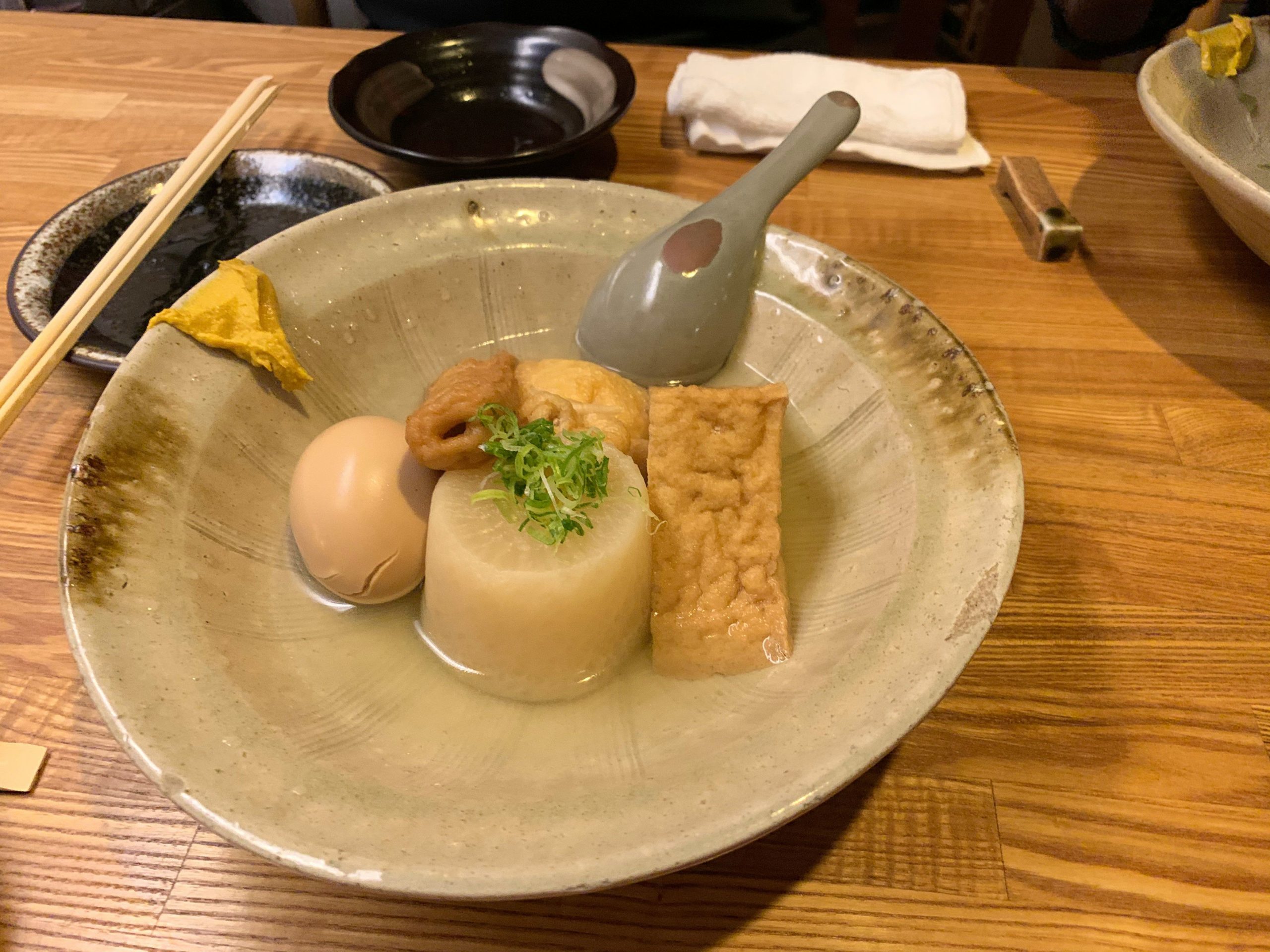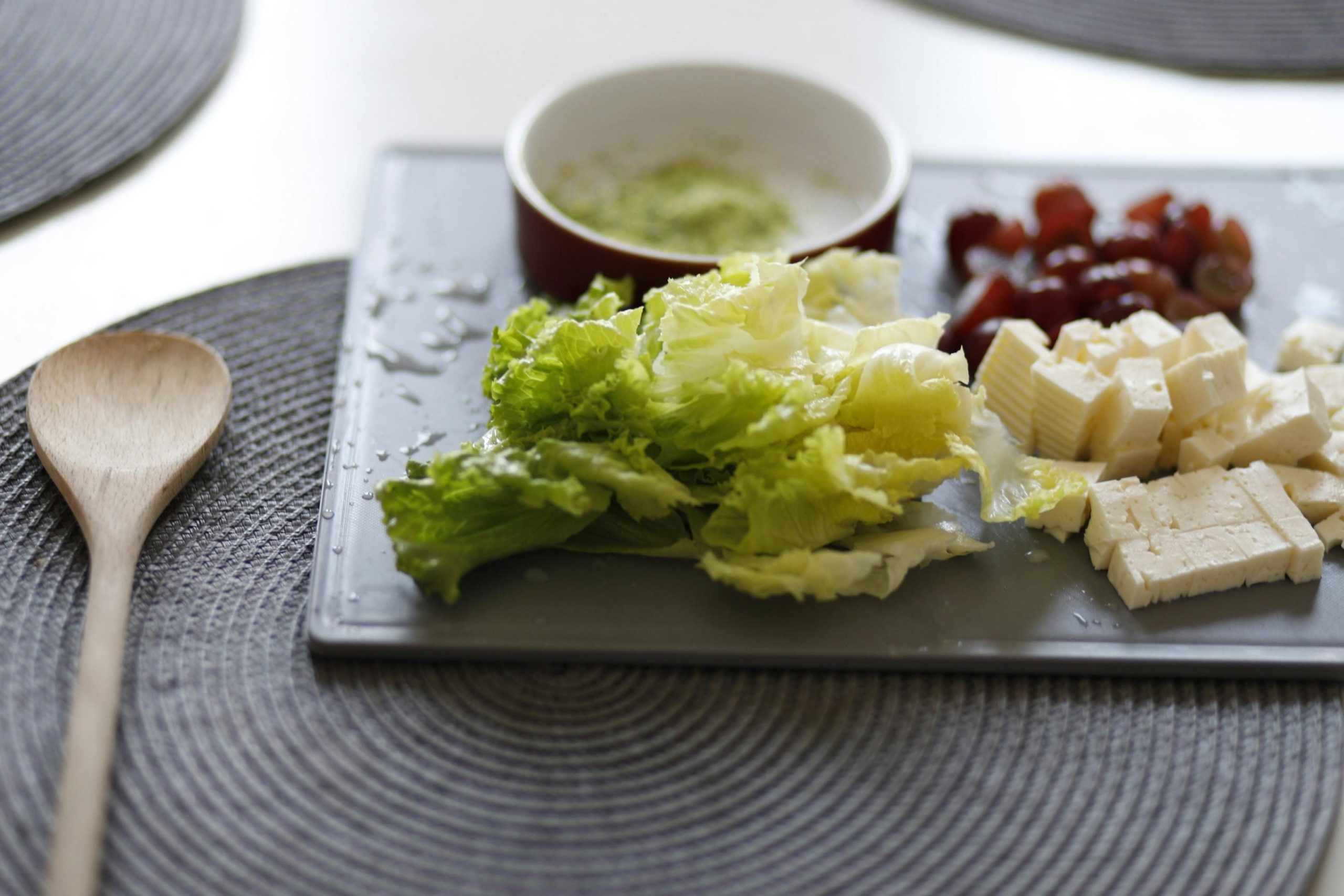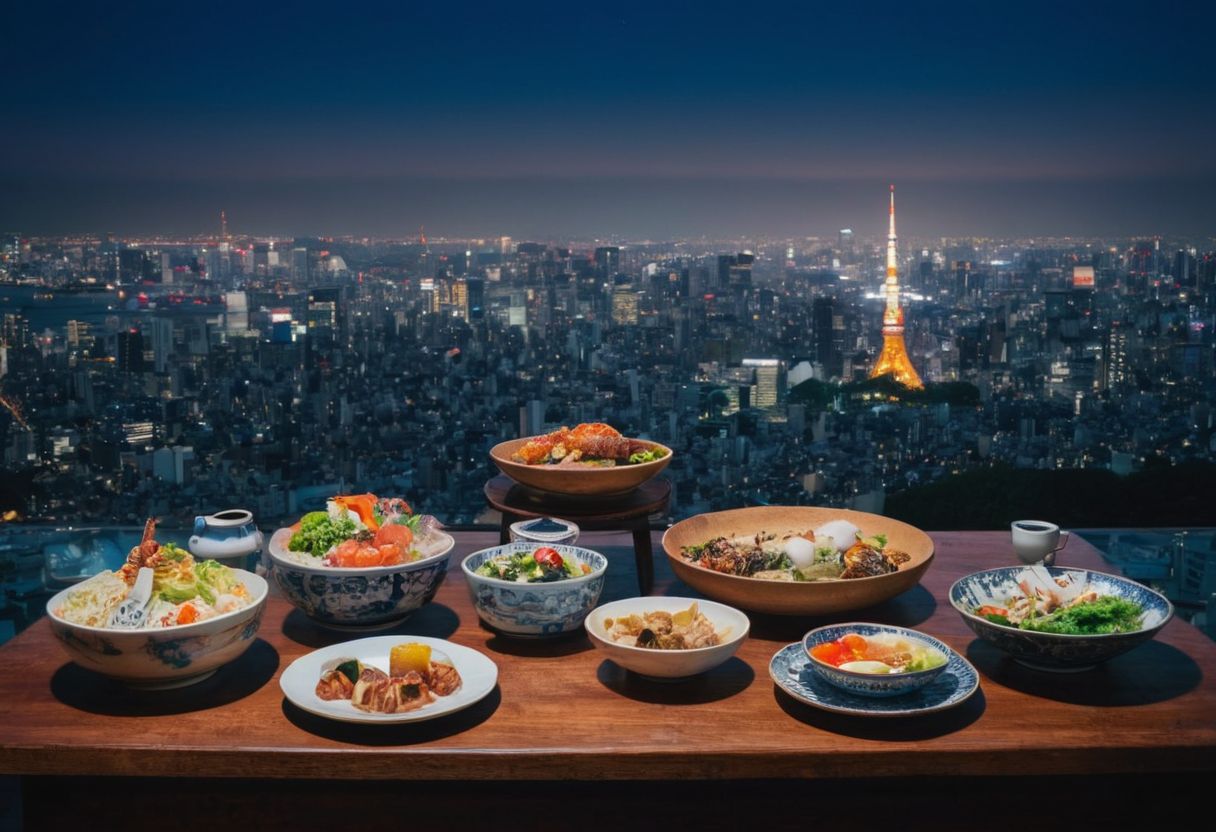Ever wondered what makes oden a beloved winter comfort food in Japan?
Finding a dish that is both comforting and nutritious can often be a challenge, especially during colder months.
Oden is a traditional Japanese hot pot dish known for its variety of ingredients like tofu, daikon, eggs, and fish cakes, all simmered in a flavourful broth.
In this comprehensive guide, we’ll explore everything from the history of oden and its key ingredients to cooking tips and regional variations, ensuring you have all the knowledge to enjoy this delightful Japanese stew.
Understanding Oden Food: An Introduction to the Japanese Staple

Oden is a quintessential Japanese dish that epitomises the warmth and comfort sought during the chilly seasons. It is a type of hot pot that includes a variety of ingredients such as tofu, daikon radish, boiled eggs, and an assortment of fish cakes, all simmered gently in a light, soy-flavoured broth. The simplicity of its preparation and the heartiness it offers make it a staple food in Japan, especially popular during autumn and winter. The dish not only warms the body but also the soul, making it a favourite in both homes and street food settings.
The appeal of oden lies in its versatility and the depth of flavour that emerges from its ingredients. Key components of oden include:
- Fish cakes (known as ‘kamaboko’) which provide a chewy texture,
- Daikon radish that absorbs the broth’s flavour becoming juicy and tender,
- Boiled eggs which add richness,
- Konnyaku (a jelly-like food made from konjac yam) that introduces a unique texture. This combination, along with the savoury broth, creates a harmonious blend that is both satisfying and comforting, embodying the essence of traditional Japanese cuisine.
The Historical Journey of Oden Japanese Food
Oden’s journey through Japanese history is as rich and varied as the ingredients in its pot. Originally known as ‘Kanto Daki’, this dish began as a humble street food during the Edo period, providing warmth and nourishment to the working class during the cold winter months. It was a simple, yet satisfying meal that encapsulated the essence of comfort food for many Japanese people. Over time, it evolved, gaining popularity and becoming a staple in the culinary landscape of Japan.
The transformation of oden is notable not only in its spread across Japan but also in its cultural significance. The name ‘Oden’ itself, which means ‘to simmer’, reflects the cooking technique that is central to its preparation. This method of slow simmering allows the flavours of the diverse ingredients to meld beautifully, creating a dish that is much more than the sum of its parts. From street stalls to family dinners and festive gatherings, oden has secured its place as a beloved symbol of Japanese tradition and culinary artistry.
Key Ingredients of Oden: Building the Perfect Japanese Stew

Oden, a comforting Japanese stew, is renowned for its versatility and the rich flavours it derives from its myriad of ingredients. At the heart of this dish are the traditional components like daikon radish, tofu, and konnyaku. However, it’s the variety of fish cakes, known as nerimono, that truly adds depth and diversity to the stew. These fish cakes are made from white fish and come in various shapes and textures, each contributing uniquely to the overall dish.
In addition to the staple ingredients, oden allows for numerous optional additions that can be tailored according to personal preferences or regional styles. Ingredients such as boiled eggs, potatoes, and different types of seafood like octopus and squid are popular choices. Each element is carefully simmered in a dashi-based broth, which can vary from the lighter Kansai style to the darker, soy sauce-rich Kanto style. This adaptability makes oden a perfect dish to experiment with and enjoy in various forms.
The preparation of oden is straightforward yet requires attention to detail to ensure all flavours are perfectly melded. The process typically involves simmering all ingredients in a carefully prepared broth, allowing each component to absorb the aromatic flavours. The result is a warming, nutritious stew that is ideal for the colder months, offering a delightful experience of traditional Japanese culinary artistry.
Nerimono in Oden: The Role of Fish Cakes and Balls

Nerimono, the collective term for Japanese fish cakes and balls, plays a pivotal role in enriching oden’s flavour profile. Made from surimi, or ground white fish like Alaska pollock, these items are seasoned and shaped into various forms such as balls, sticks, and tubes. Depending on their type, they can be steamed, grilled, boiled, or deep-fried, each method enhancing the stew with different textures and flavours. Popular varieties include kamaboko, chikuwa, and hanpen, each known for their distinctive characteristics.
The inclusion of nerimono in oden not only adds a delightful chewiness but also absorbs the savoury broth, making every bite flavourful. For those looking to prepare oden at home, many Japanese supermarkets offer an ‘Oden Set’, a convenient package containing a selection of nerimono. This assortment allows for a diverse and rich oden experience, showcasing the essential role these fish cakes play in this beloved Japanese dish.
Cooking Oden: A Traditional Recipe Guide
Cooking traditional Japanese oden begins with preparing a flavourful base. Start by making the dashi, a fundamental Japanese soup stock. You can use ingredients such as kombu (dried kelp) and katsuobushi (dried bonito flakes) to create this. Simply simmer these ingredients in water for about 20-30 minutes, then strain to obtain a clear, aromatic broth. This dashi serves as the foundation of your oden, imparting a subtle umami flavour to the entire dish.
Once your dashi is ready, it’s time to add the main ingredients. Oden typically includes a variety of items such as daikon radish, boiled eggs, konnyaku, and an assortment of nerimono (fish cakes). Here’s a simple breakdown:
- Daikon radish: Peel and cut into thick slices, then simmer until tender.
- Boiled eggs: Peel and add to the broth.
- Konnyaku: Slice and pre-boil to remove any bitterness.
- Fish cakes: Include different types like kamaboko and chikuwa.
Simmer all these ingredients in the dashi broth, allowing them to soak up the flavours.
The final step in cooking oden is the simmering process, which is crucial for melding the flavours together. Lower the heat and let the pot simmer gently for at least 2 hours. This slow cooking process allows the ingredients to become infused with the dashi, becoming tender and flavourful. Serve your oden hot, ideally in a large communal pot, allowing everyone to enjoy this comforting dish during the colder months.
Mastering Oden: Top Cooking Tips and Techniques
To master the art of cooking oden, starting with a robust dashi broth is crucial. This broth, typically made from kombu (dried kelp) and katsuobushi (dried bonito flakes), forms the foundational flavour of the dish. Simmer these ingredients gently to extract their rich, umami flavours before straining to get a clear broth. This step sets the stage for a flavourful oden.
When adding the main ingredients to your oden, it’s important to introduce them in stages based on their cooking times. Start with the daikon radish and konnyaku, as they take longer to absorb the flavours and become tender. After these have simmered for a while, add the fish cakes and other quicker-cooking items like boiled eggs. Here’s a simple guideline:
- Daikon and konnyaku: Add first and simmer until they start to soften.
- Fish cakes and eggs: Introduce later to prevent overcooking.
The simmering process is where the magic happens in oden preparation. Keep the heat low and allow the pot to simmer gently. This slow cooking not only melds the flavours together but also ensures that each ingredient absorbs the savoury dashi broth, becoming infused with depth and character. A minimum of two hours is recommended for the best results, creating a dish where the flavours are perfectly balanced and harmonious.
How to Enjoy Oden: Eating Etiquette and Tips
When enjoying oden, it’s important to observe some traditional etiquette to fully appreciate the dish. Firstly, always use chopsticks to pick up the ingredients, and it’s polite to take only one piece at a time. This not only shows respect but also allows you to savour each bite. Additionally, if you’re sharing the pot, avoid rummaging through it; instead, take the topmost item closest to you.
To enhance the taste of oden, you can dip the ingredients into a small amount of Japanese mustard (karashi) or ponzu sauce, depending on your preference. These condiments add a delightful kick to the dish. Keep in mind:
- Karashi is quite strong, so use it sparingly.
- Ponzu sauce provides a citrusy contrast, perfect for balancing the savoury broth.
Enjoying oden with these tips will not only make your meal more enjoyable but also help you respect the cultural significance of this beloved Japanese dish.
Perfect Sake Pairings for Oden Soup

When it comes to enhancing the flavours of oden, choosing the right sake is crucial. A well-paired sake can elevate the taste experience, making each sip and bite harmoniously delightful. For a traditional oden with a rich dashi broth, consider a Junmai sake, which is pure rice sake with no added alcohol. Its full-bodied flavour and slightly higher acidity cut through the richness of the oden, balancing the umami taste.
For those who prefer a lighter oden variant, a Ginjo or Daiginjo sake might be the perfect match. These sakes are known for their fruity and floral notes, which complement the subtle flavours of the fish cakes and vegetables in oden. Here are some pairing suggestions:
- Junmai: Pairs well with hearty ingredients like daikon and boiled eggs.
- Ginjo/Daiginjo: Best with lighter ingredients such as fish cakes and tofu.
Choosing the right sake can turn a simple meal of oden into an exquisite culinary experience.
Regional Oden Variations: A Tour of Japan’s Local Flavours
Oden’s regional diversity is a testament to Japan’s rich culinary tapestry. In the Chubu region, for instance, the oden takes a unique form with Shizuoka-style oden, characterised by its dark, almost black broth, making it distinctive in appearance and taste. This variety is also served with a sprinkle of fish powder over black hanpen and pork, showcasing how local ingredients influence the dish’s flavour profile.
Moving north to Hokkaido, the oden features local specialties like milt, which adds a creamy texture to the broth. In contrast, the southernmost prefecture of Okinawa offers a version with pig’s feet, infusing the stew with a rich, meaty flavour. Each regional variation not only highlights local culinary preferences but also:
- Utilises regional ingredients,
- Adapts to local taste palates,
- Enhances the traditional oden experience with unique local twists.
Oden Around the World: International Takes on the Japanese Dish
Oden, originally a Japanese winter comfort dish, has traversed borders and found a place in various international cuisines, often tailored to suit local tastes and ingredients. For instance, in Taiwan, oden is commonly found in convenience stores and night markets, featuring local ingredients like duck blood and intestine, adapting the dish to Taiwanese preferences. This version is typically spicier, reflecting the local palate.
In Korea, ‘eomuk-tang’ or fish cake soup shares similarities with oden but stands out with its distinct Korean flavours. The broth is often seasoned with gochugaru (Korean red pepper flakes) and soy sauce, offering a bolder taste. This adaptation not only highlights the versatility of oden but also its ability to merge seamlessly with the culinary identity of other cultures, making it a beloved dish worldwide.
Enhance Your Culinary Journey with a Curated Oden Food Tour
Embarking on a curated culinary tour with INDULGE can significantly enhance your appreciation of oden and other international cuisines. These tours are designed to dive deep into the heart of Zurich’s culinary scene, where you can experience a blend of Swiss and international flavours. By participating, you gain firsthand knowledge from local experts who share insights into the preparation and cultural significance of dishes like oden.
The benefits of joining an INDULGE food tour include:
- Exploring the rich culinary history of Zurich through guided walks in historical areas like Old Town.
- Enjoying exclusive dining experiences where oden and other international dishes are served in a more sophisticated setting.
- Gaining a deeper understanding of how traditional Japanese dishes like oden are appreciated and adapted around the world. This enriches your culinary journey, making each meal more than just food, but a story to be savoured.
Frequently Asked Questions
What is oden eating?
Oden eating refers to the consumption of a traditional Japanese hot pot dish known as oden. This dish includes a variety of ingredients such as tofu, daikon radish, boiled eggs, and an assortment of fish cakes, all simmered gently in a light, soy-flavoured broth. It is particularly popular during the colder months in Japan and offers a comforting, nutritious meal that warms the body and soul.
Is oden the same as Hotpot?
While oden is a type of hot pot, it is distinct in its ingredients and flavour profile. Oden specifically refers to a Japanese hot pot that features a variety of ingredients like tofu, daikon radish, boiled eggs, and fish cakes, simmered in a soy-flavoured broth. In contrast, hot pot can be a more general term for dishes across various cultures that involve cooking a variety of ingredients in a communal pot of simmering broth.
What does oden taste like?
Oden has a rich and savoury taste, primarily derived from its dashi-based broth, which is seasoned with soy sauce and other flavours. The ingredients like daikon radish absorb the broth becoming juicy and tender, while fish cakes add a chewy texture. Boiled eggs contribute richness, and other optional ingredients can vary the taste further. The overall flavour profile is comforting, with a harmonious blend of umami and subtle sweetness from the simmered ingredients.
Why is it called oden?
The name ‘Oden’ comes from the Japanese word ‘to simmer’, which reflects the cooking technique central to its preparation. This method of slow simmering allows the diverse ingredients to meld their flavours beautifully, creating a dish that is much more than the sum of its parts. The name encapsulates both the method and the essence of this traditional Japanese dish.








